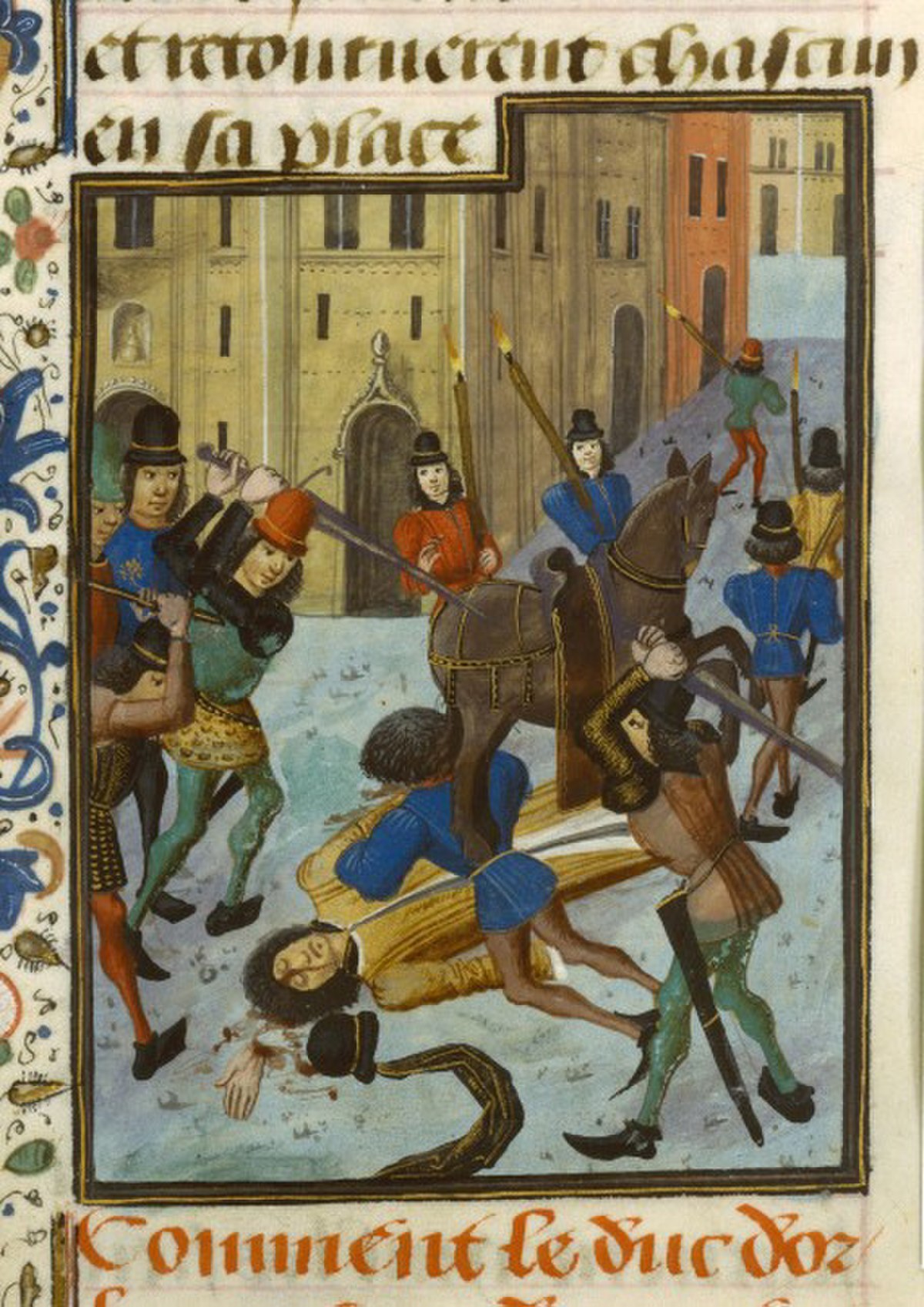
Armagnac–Burgundian Civil War
FranceOn 23 November 1407, Louis, Duke of Orléans, brother of king Charles VI, was murdered by masked assassins in the service of John the Fearless at the Hôtel Barbette on the Rue Vieille-du-Temple, in Paris.
The Armagnac–Burgundian Civil War was a conflict between two cadet branches of the French royal family — the House of Orléans (Armagnac faction) and the House of Burgundy (Burgundian faction) from 1407 to 1435. It began during a lull in the Hundred Years' War against the English and overlapped with the Western Schism of the papacy. The French civil war begins.
The war's causes were rooted in the reign of Charles VI of France (Charles V's eldest son and successor) and a confrontation between two different economic, social and religious systems. On the one hand was France, very strong in agriculture, with a strong feudal and religious system, and on the other was England, a country whose rainy climate favoured pasture and sheep farming and where artisans, the middle classes and cities were important. The Burgundians were in favour of the English model (the more so since the County of Flanders, whose cloth merchants were the main market for English wool, belonged to the Duke of Burgundy), while the Armagnacs defended the French model. In the same way, the Western Schism induced the election of an Armagnac-backed antipope based at Avignon, Pope Clement VII, opposed by the English-backed pope of Rome, Pope Urban VI.
